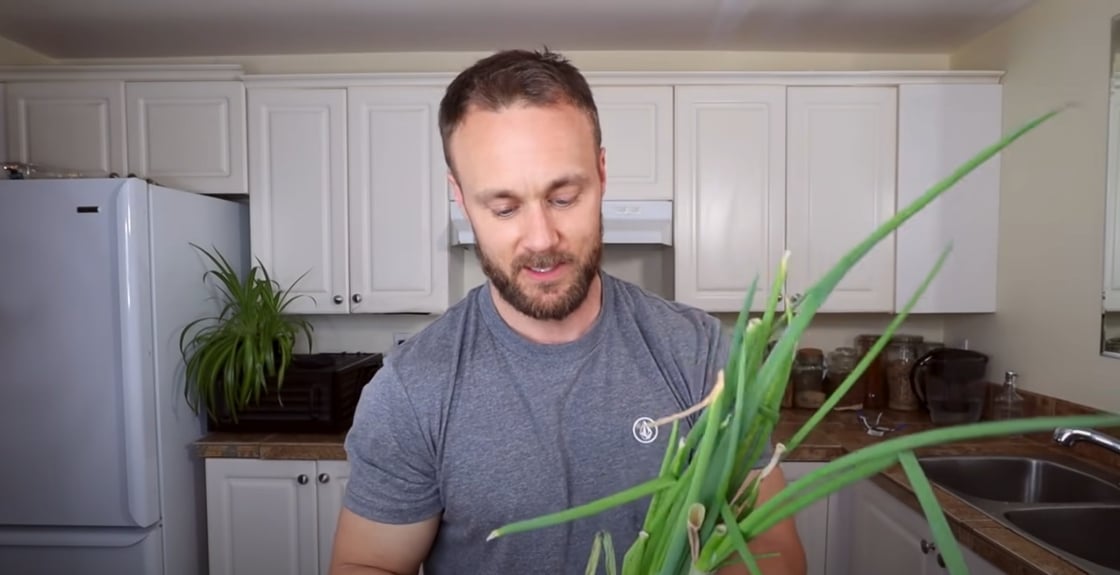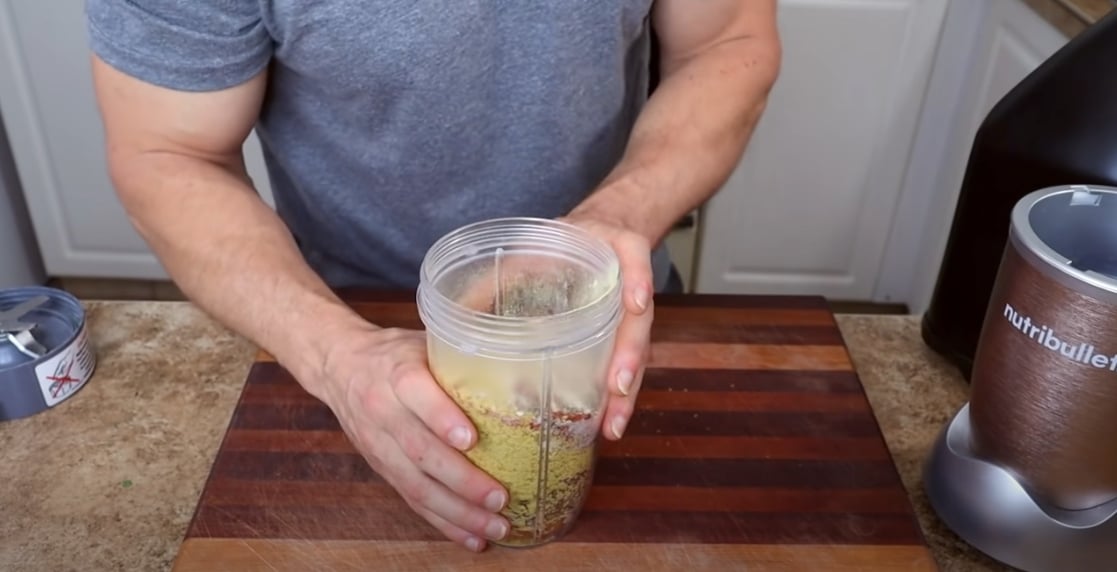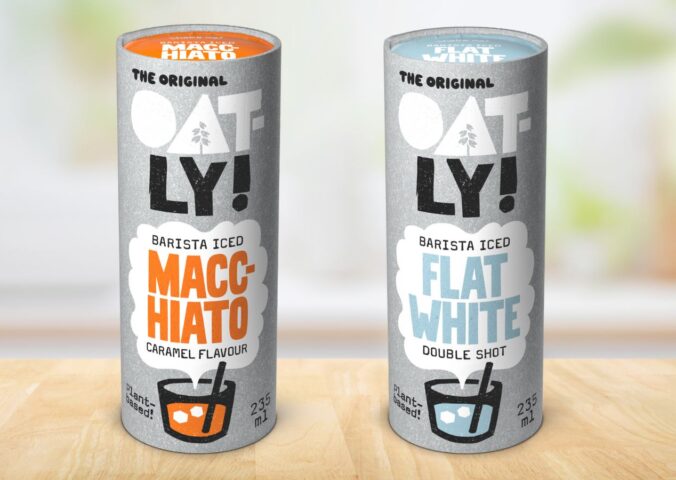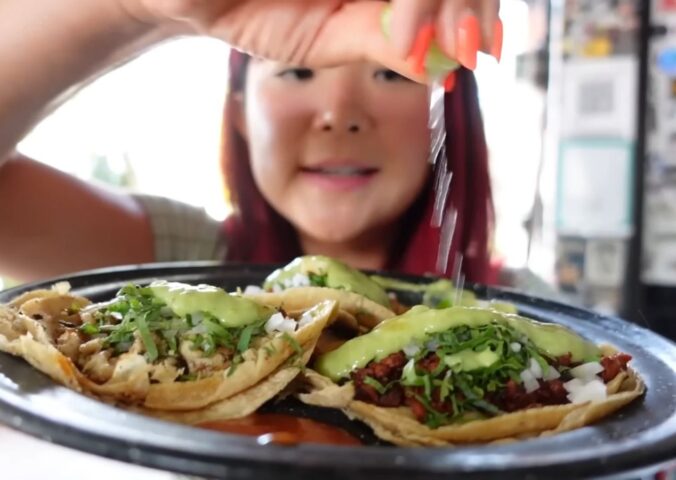Derek Simnett, a certified nutritional practitioner from Canada, has been a key figure in the plant-based community since launching his YouTube channel, Simnett Nutrition, in 2015. With over 750,000 subscribers, he shares insights on plant-based nutrition, fitness, and holistic health.
Transitioning to a plant-based diet can feel overwhelming for some, especially when it comes to meal prep, nutrition, and finding the right ingredients. But following a healthy and nutritious vegan diet is far easier than many people think. If you’d like some help along the way, Simnett regularly shares simple, effective food hacks to make plant-based eating easier. One of his videos, titled “10 Vegan Food Hacks That Will Change Your Life!”, showcases a number of hacks that will upgrade your cooking and reduce food waste. Whether you’re new to veganism or looking for ways to simplify your routine, these ten tips can help improve your cooking, reduce waste, and boost nutrition.
Read more: ‘The One Dish I’d Cook to Impress a Vegan Skeptic’
1. Keep greens fresh longer

Fresh herbs like cilantro and parsley tend to wilt quickly in the fridge. Simnett recommends washing them, trimming the ends, and placing them in a glass or jar of water—just like fresh flowers. This method helps them stay vibrant and fresh for longer. He also applies the same technique to green onions, noting that they will continue to grow when stored in water. Changing the water regularly further extends their shelf life.
2. Select the best avocados
Picking a ripe avocado can be hit or miss. Simnett advises looking for avocados that still have the small stem (or “button”) attached, as they are less likely to be bruised or brown inside. He also suggests buying avocados when they’re firm and letting them ripen at home to avoid damage from excessive handling at the store. If too many ripen at once, placing them in the fridge will slow the process.
3. Manage banana ripeness
To prevent bananas from over-ripening, Simnett recommends storing them in the fridge. While the peel may darken, the fruit inside remains fresh. For long-term storage, peeling and freezing ripe bananas is a great option, especially for smoothies or baking.
4. Simplify mixing nut and seed butters
Natural nut butters often separate, with oil rising to the top, making them hard to stir. Simnett’s solution is simple: store the jar upside down for a few days before opening. This allows the oil to distribute evenly. When ready to use, shaking the jar helps create a smooth consistency without messy spills.
5. Add kala namak for an ‘eggy’ flavor
Kala Namak, or black salt, adds an egg-like flavor to vegan dishes due to its sulfur content. Simnett uses it in tofu scrambles and vegan “egg” salads to enhance their taste. A small amount can make a significant difference in replicating the flavor of eggs.
6. Create a cheesy nut and seed crumble

For a nutritious, flavorful topping, Simnett blends nuts and seeds – such as Brazil nuts, almonds, sunflower seeds, and cashews – with nutritional yeast, garlic powder, onion powder, smoked paprika, salt, and pepper. A touch of apple cider vinegar helps the mixture clump together, creating a crumble perfect for sprinkling over salads, pastas, and stir-fries.
Read more: ‘What I Eat In A Week: Realistic Vegan Meals’
7. Embrace frozen fruits and vegetables
Many people assume frozen produce is inferior to fresh, but Simnett explains that fruits and vegetables are picked at peak ripeness before being flash-frozen, preserving their nutrients. He encourages using frozen produce, as it’s convenient, budget-friendly, and reduces food waste. Frozen fruits work well in smoothies, while frozen vegetables can be quickly added to soups or stir-fries.
8. Grind flax and chia seeds for better absorption
Flax seeds are rich in omega-3s, but the body absorbs them better when they’re ground. Simnett recommends using a coffee grinder or high-speed blender to break them down before consuming them. This ensures the full nutritional benefits of these seeds are available.
9. Cook mixed grains and legumes together
Simnett suggests mixing grains like white rice, quinoa, and red lentils when cooking to improve texture, boost nutrition, and diversify the amino acid profile of meals. He advises rinsing them thoroughly before cooking to remove bitterness and enhance digestion. Choosing grains with similar cooking times ensures they cook evenly.
10. Quickly identify non-vegan ingredients
Instead of scanning entire ingredient lists, Simnett recommends looking for the “contains” statement at the bottom of food labels. This section highlights common allergens like milk and eggs, making it easier to identify non-vegan products at a glance. He also clarifies that “may contain” warnings are related to cross-contamination risks and do not necessarily mean the product contains animal-derived ingredients.
Follow Derek Simnett on YouTube and Instagram.
Read more: ‘Why Vegans Have Smaller Brains’: Debunked






